Advanced Facebook Competitor Analysis: best Free ways
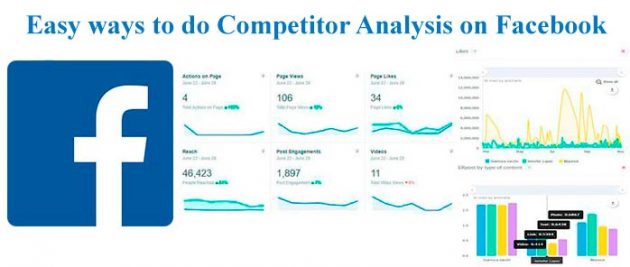
Facebook Analytics is a powerful platform that can help you to improve your marketing performance significantly while keeping costs down.
Facebook analytics helps advertisers to understand the entire journey of a target user across a set of channels, including desktop, Social media, websites, messenger, etc. But what if you want to do competitor analysis on Facebook? let’s get started.
In this article, you will learn:
- How to analyze competitors on Facebook;
- Methods of data collecting;
- Metrics and ways of influencing them;
- How to find out the best time for posting on Facebook;
- How to track competitors’ advertisements.
Facebook is a popular Social network for marketers not only because of its huge number of users around the world, but also because of its incredibly powerful analytics package. It’s important to be able to analyze customers and their behavior due to Facebook’s ever-changing algorithm and its implications for your content and business. If you refuse to adapt your approach based on Facebook analytics data, you are doomed to low coverage in your newsfeed.
Here’s a step-by-step guide of conducting detailed Facebook competitor analysis:
Analyze your competitors
The Facebook Insights data available for your business page will provide a wealth of insights, but it’s best to start your analysis of Facebook by looking at your competitors.
Search for competitors
In this part of your Facebook analysis, there are three types of posts that need to be scrutinized: posts pertaining to your industry, posts from your competitors, and your own posts. If you’re unsure who your competitor is, here are some strategies to use during your research:
- Search for them on Google. Use Google to search for key phrases related to your business. If your business is not local, you can use the search terms which describe your industry the best.
- See whom your audience is following. Check out other brands that your audience follows on social media and flag the ones which are the most similar to you.
Facebook competitor analysis
Once you’ve identified your top competitors:
- Choose 3-5 best competitors with whom you will compare your actions.
- Gather information about them, including the Social networks they use, the size of their followers, how often they post and what their ER (engagement) metrics are.
Manual competitor analysis is a lengthy process. Therefore, it is advisable to use tools.
With Popsters.com, users have access to a quick analysis of any pages, as well as competitors (not only on Facebook, but +11 other popular Social networks). Here in a couple of clicks you can:
- find out which publications are the most popular (for the chosen period);
- sort posts by likes, reposts, comments, ER (engagement rate);
- sort by attachment publications – photo, video, text, (and find the most popular among them);
- search for the best content by phrases, hashtags, on Social networks in general, using filters by type and sorting;
- compare graphically the indicators of several pages at the same time;
- view the numerical indicators of groups for the selected period (real number of subscribers, average ER of a post / group per day, number of comments, etc.);
- explore text content in groups using text referring;
- export the statistics to popular formats flexibly;
- and other possibilities for analysis of any pages on Facebook.
You can analyze and compare any page in graphical form (your own or competitors’) by more than 20 metrics. Some of them:
- Relative activity by days of week/Text length;
- Relative activity by time of day/Text length;
- Likes;
- Comments;
- Er (engagement rate;
- ER post by type of content;
- Hashtags/ER;
- Words/ER;
- ER post by text length;
- Days of week/ time of day;
- Posts by type of content.
All charts are interactive, you can change the range, export to different formats, exclude sources:
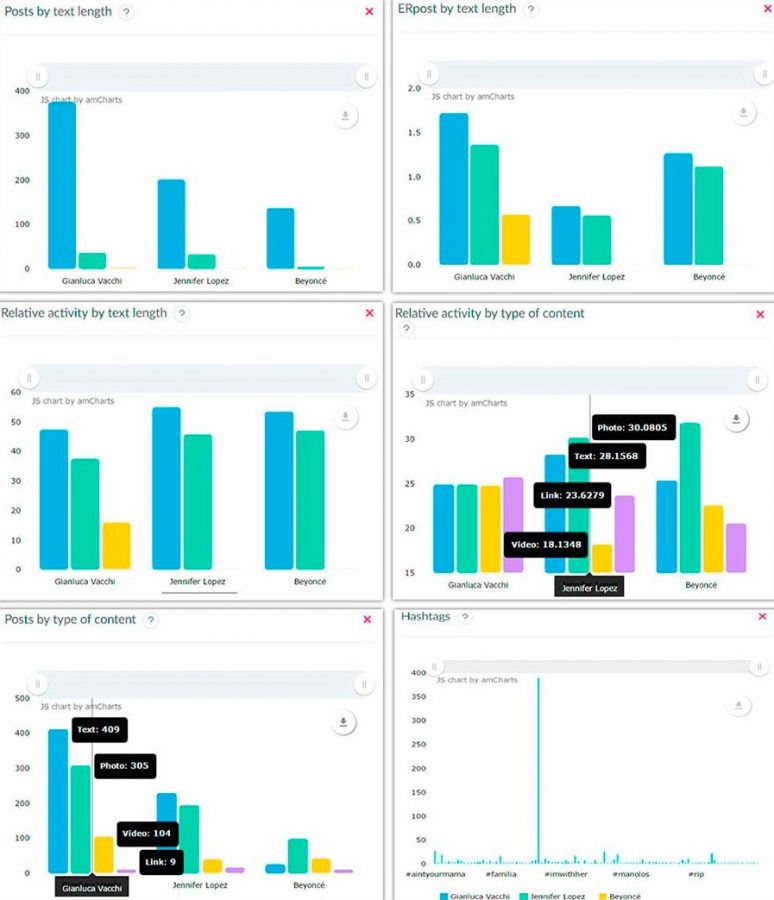
Another useful aspect of the analysis is the graphs of the content of posts, which include the total volume of posts, breakdown by post type (photo, video, link), overall engagement and engagement for each post. This data will help you to compare your results with those of your competitors and suggest ideas to incorporate into your promotion strategy.
Data collection on Facebook
Now that you have a starting point and an idea of what your competitors are doing, it’s time for the next step. At this point, you will be able to get your account data using Facebook Insights or Popsters.
Accessing Facebook Insights is easy: just go to the Facebook Page Manager and click Insights.
The default data range shown in Facebook Insights is 28 days, but you can switch to a more appropriate period.
If you want to download data for analysis or management from the Facebook platform, click the Overview tab and then Export Data. A pop-up window will appear showing three types of data that you can export: page data, post data and video data, and the range of data when you want to get statistics. My recommendation? Download everything.
What does each report include?
- The page data will show you the key metrics of the page to interact with, such as sources and audience data.
- These publications provide metrics for the reach of posts and impressions.
- Video data displays your key video metrics such as views: unique, paid, and regular.
If you don’t want to go into the process of loading and interpreting multiple datasets, you can also conduct advanced analysis of Facebook with Popsters. So you can download any data in the required format and get a visual report.
When you have all the data, it’s time to dive deeper into the analysis on Facebook.
This article may be interesting too:
How to find the most liked Facebook posts in any accounts.
Analyzing your Facebook page data
Once you’ve gathered all your data, it’s time to dive into numbers. It is best to split this into two different parts. We’ll first look at page-level metrics and then analyze the performance of individual posts.
Before trying to make sense of all this Facebook analytics data, it’s helpful to establish some Key Performance Indicators (KPIs) that are important to your business. For example, if you are using your Facebook page to drive traffic to your website, one of your KPIs might relate to click-throughs. However, if your focus is on building a community, set KPIs for engagement statistics.
Facebook likes
It displays the number of people who click the “Like” button on one of your posts. Likes on Facebook are a clear indicator that someone likes your content. This is a metric that you should always work to increase as it shows that people have some connection with the content you post.
The “Likes” tab for all time displays the total number of likes for the page for the period of time you specified. You can use the data on this tab to identify specific days when likes have increased. By comparing the data on this page with the post data, you can identify specific posts that resonated well with your audience.
While there are tons of metrics you can take a look at, I’ve compiled a list of key metrics that, in my opinion, indicate quality content and a successful strategy.
Users involved
Engaged users refers to the number of people who clicked anywhere on your post. This is an important indicator for growth.
Where you can find engagement metric
To see the engagement rate for each post, go to your stats in the same place where you viewed your organic reach (Statistics section – Posts). The number of users who interacted with your content is listed in the “Users Engaged” column.
Video statistics
These pages also include statistics about your video content and how users interact with it.
To access this data, go to the total video views tab (daily, weekly, 28 days), for paid and regular views. There is also a tab with data on the total number of video views per day, that is, the number of views of the video after the initial playback. More than one play per person means people come back to your page to watch the video.
Analyzing your Facebook posts
By analyzing the performance of individual Facebook posts, we can analyze reach and engagement metrics. Here’s a breakdown of each one:
- Post Reach of Facebook analytics displays basic post statistics such as impressions, engaged users, consumption and video views.
- Interaction with publications (Er post) contains basic interaction statistics such as engaged users, consumption and negative reviews.
Coverage/Reach
According to Facebook, “Post reach is the number of (unique) people who have seen your post. Your post is considered to be reached by someone when it appears in their news feed.”
Number of impressions are similar to reach, but refers to the total number of views on a post. Of course, it’s important to focus on both metrics: the more people you reach, the more potential customers will see your posts.
The algorithm that Facebook uses to determine what to show in each user’s newsfeed is known as Edgerank and consists of several different factors. To simplify the topic of Facebook analytics, let’s say your posts get more reach with more clicks, shares, comments, and likes.
Comments, likes and posts
Users interact with your posts in three main ways:
- Comments;
- Like or reaction;
- Shares.
These metrics analysis will help you to determine which messages resonate the most with your audience. Once you know which posts worked, take whatever you can from them to replicate that success.
Shares
If someone shares one of your Facebook posts, it’s more than like or commenting, it’s a strong indicator that your post has really resonated. Finally, they won’t show it to their friends and followers with their “mark” of approval unless it really makes them want to. When it comes to sharing, users have the ability to:
- Share on your own feed;
- Share in a friend’s feed;
- Share on the page they manage;
- Share in a private message;
- Share in a group.
Regardless of how subscribers share your content, this action increases the Edgerank for the content and, in turn, increases the reach of that post.
Viewing the posts with the most shares will help you to determine the posts people are sharing the most. It also allows you to keep creating content that people are more likely to share.
Comments
Comments allow you to receive feedback on your content directly from your audience. Not all comments are good, and negative comments may indicate that you should stop and rethink the content you post.
Positive comments and engagement indicate that your content resonates with your audience. Regardless of the shade, more comments mean more fuel for the Edgerank algorithm.
Links and clicks on publications
As your content begins to grab attention, it naturally begins to increase in reach. As long as your CTR stays constant, you will see an increase in the total number of clicks on your posts or conversions to your site.
On the “Publications” tab in the statistics, you can see this data, such as: clicks, click-throughs, other clicks (likes, comments, shares) and photo views. These are publications in which people have demonstrated their involvement.
How to find the best time to post on Facebook?
Most social media marketers are passionate about finding the best day and time to post. There are some studies and guidelines for when it is best to post to Facebook. According to Popsters, the highest activity is at 9 am, 4 pm and 11 pm. The highest activity is on Sunday, the lowest on Tuesdays and Wednesdays. However, this depends very much on your business and audience.
To find out for sure (for your case), analyze your page on Popsters (built-in analytics on Facebook does not provide such data). If you have a limited amount of content or don’t want to post every day, use this information to pick the best days when your audience is online and more likely to share your publications.
This is an example of analysis of the best time to post on Facebook for star pages:
Also, for the selection of the optimal publication time, the following graphs will be useful:
Posts by days of week
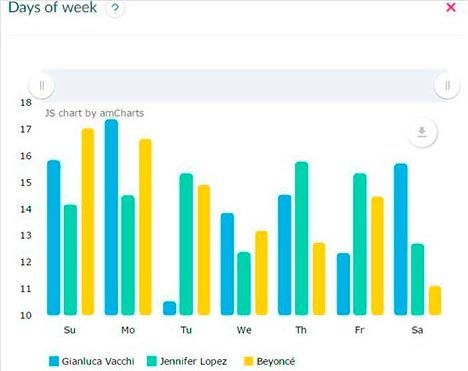
By time of day
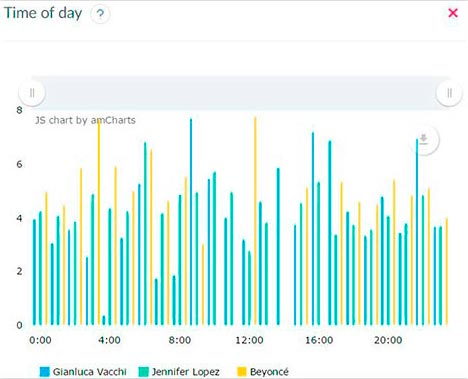
ER post by days of week/ Text length
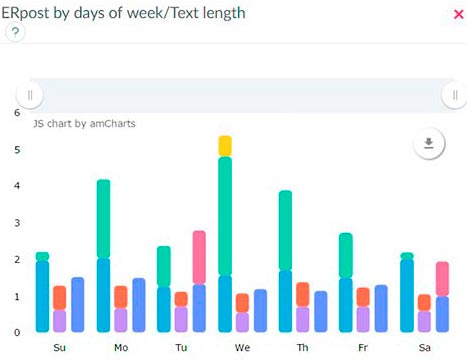
Relative activity by days of week/Text length
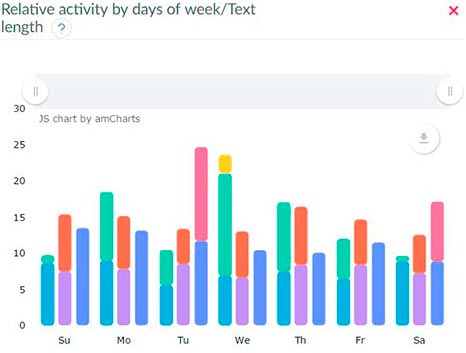
Monitor competitors’ Facebook ads
If you want to know what pages, products, or services your competitors are promoting, as well as get ideas for yourself, here are some ways to do it. The first two methods are free.
Using a business page and Facebook Ads library
- Log into Facebook and open the business page of the company whose advertisements you want to see;
- Scroll down the page, find the “Page transparency” block on the left and click on the “All” link.
In the opened window, select “Go to advertising library”.
All ads can be filtered by:
- country;
- impressions by date (exact date, date range, etc.);
- platform (Facebook, Instagram, Audience Network, Messenger).
- You can also go to the advertising library directly.
You just need to add the url of the competitor’s page and your email. You will receive advertisements of competitors and all updates on them directly to the mail.
BigSpy Tool
The tool allows you to search for ads by categories or by keywords that may be of interest. This tool works similarly to the Facebook ad library, but contains more ads that you can use to create new creative posts.
What you have to do after analyzing these pages / posts
Conducting in-depth analysis on Facebook is a fundamental step towards improving your social media marketing results. What is important is what you do with this data. Here are some important steps to take with your competitors in mind:
- Conduct a SWOT-analysis (strengths, weaknesses, opportunities and threats).
- Find gaps or opportunities for improvement compared to competitors’ performance.
- Find opportunities to do things that others have not yet done.
Hope you found a lot of useful information in this article about Facebook competitor analysis. Most importantly, find inspiration, but never copy from others. All Social media platforms are different, so what works for one may not work for another. In addition, potential clients will be able to catch the behavior of the one who imitates and change their mind about him. Therefore, data is needed as a starting point for improving your actions.
I’ve found an awesome video, about how great it is to give smiles to people. Have a nice viewing 😉
P.S. I hope it was useful article for you. If you have any questions or requests to the application, write about them in comments or any contacts on blog. Please share this post with your friends or those who it can come in handy. I will be very grateful.
Useful article in a continuation of the topic:
Updated on

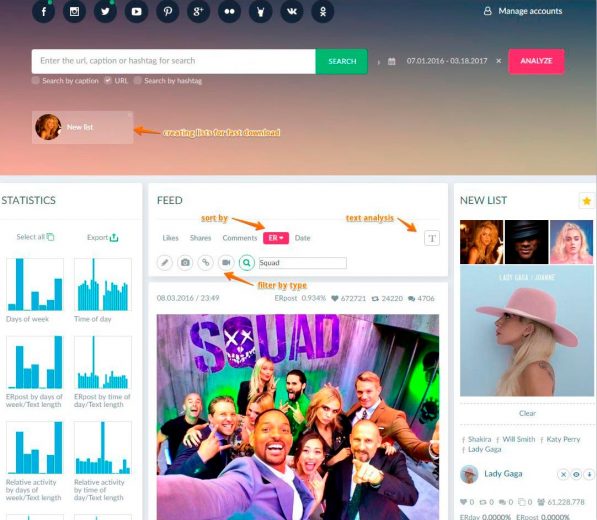
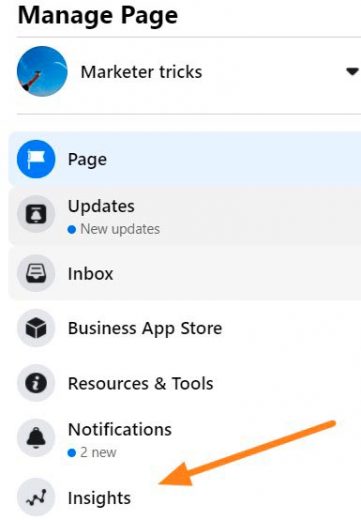
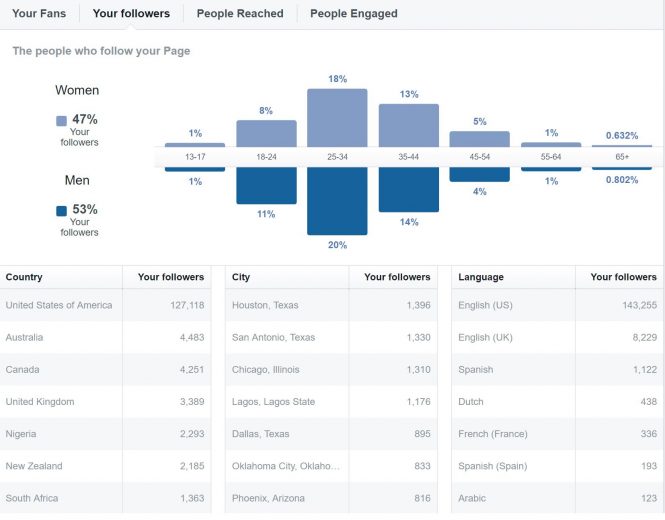
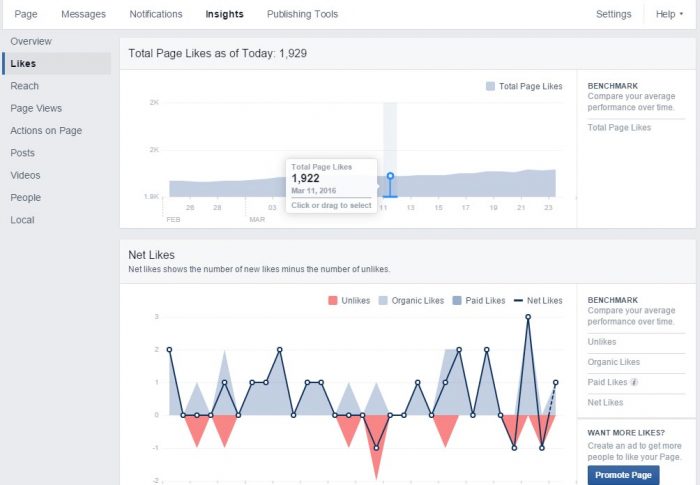
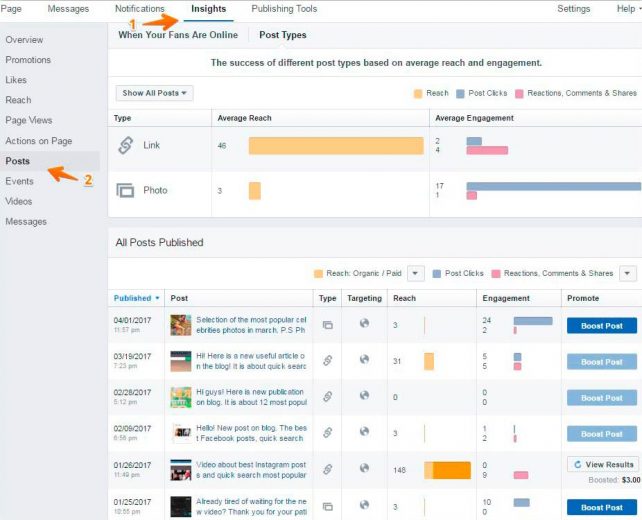
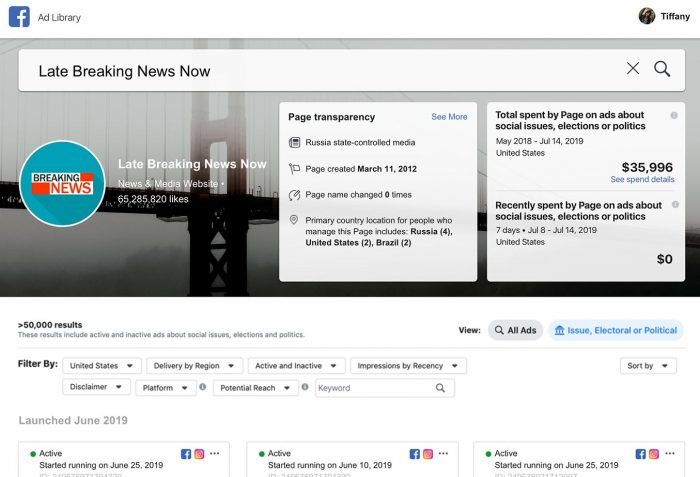
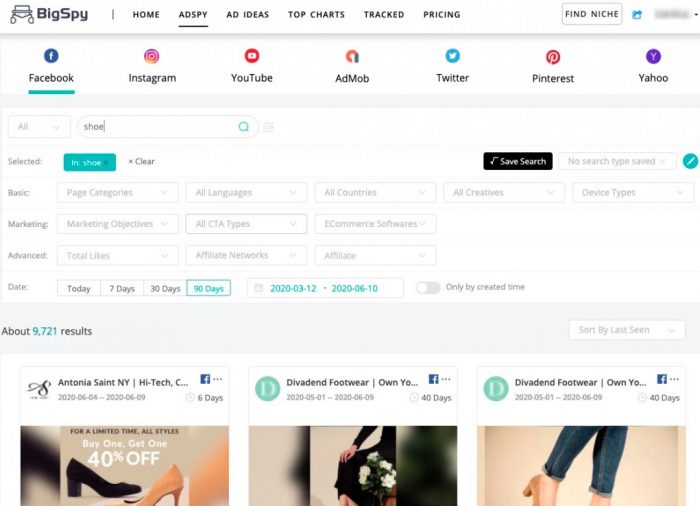


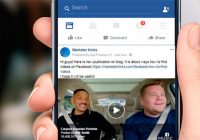
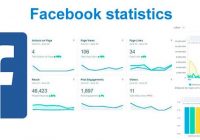
Wow! So many cool insights, thanks)
I’m glad to hear it 😉